How To Catch Trout: Expert Advice From A Trout Guide
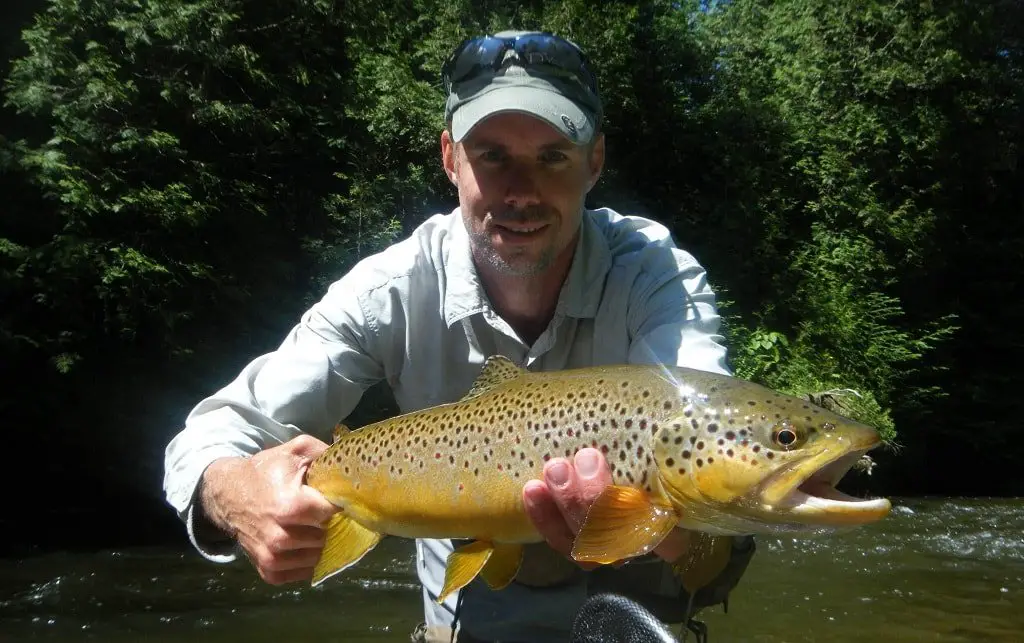
It’s my job as a full-time trout guide to teach people how to catch trout properly, effectively, and consistently, and in this article, I’ll give you the same advice and my best tips that I give to my clients on the water.
But I’ll also be brutally honest with you, so be prepared!!
1. Learn From Experts
I’ve been teaching anglers for over 22 years, and I have been fishing for trout for over 37 years, which is why I can say for certain that, unfortunately, there is a lot of bad information coming from top websites and chat forums that make learning how to fish for trout more difficult for new anglers.
I know that some of you will read through this article and then go to the next website to see what they have to say, but if you do, read the below section first.
I just typed in “How to catch trout” on Google, and this is what the top 5 websites say.
- One website recommends you use Aberdeen hooks, and another website recommends baitholder hooks. Guys, trout guides never use these hooks because they are a low hooking and holding percentage hooks. Trout guides use high-quality wide-gape hooks like the Raven Specimen hook or Gamakatsu Octopus hooks.
- The top website, which is a government state website, and another website recommends using red and white bobbers for trout – anytime I see someone recommend these bobbers, it makes me vomit in my mouth a little – these are crap!! Honestly, the second I see someone recommend these, they lose all validity. No good guide or angler uses red and white bobbers, and since there are so many better bobber options than these, you should never use these for trout.
- The third website on the list recommends shiny split shots with removable tabs – FYI, these are a great way to spook big trout and to put twists in your leader line when fishing in currents.
- That same website also said to use gold barrel snap swivels that all come in a trout kit they recommend – FYI, I wouldn’t use that kit even if they gave me a lifetime supply for free because just about everything in it is crap, and instead of catching more trout, I would catch less trout.
- A direct quote from the same website – “Most trout over a foot long cut flies and insects out of their diet“. This is utter crap! I have hundreds of happy clients who have landed big trout over 20 inches on small flies, and I know many very good trout guides and anglers who catch a lot of very large trout on small flies.
Guys… I guarantee you won’t see any of that recommended gear in the vests or packs of top guides or top anglers because that’s not what good anglers use to catch trout.
Such bad advice would even make it harder for guides and their clients to catch trout if they used it!
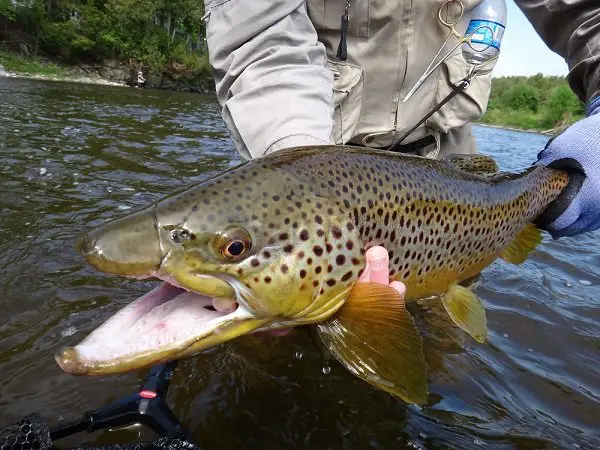
Here is more misinformation from the top five articles that I’ll rip apart so you can learn from it.
- Tip your spoons with wax worms for more bites – WRONG! Although I see this recommended by other anglers, there is no data proving a fish that eats a lure tipped with wax worms would not have hit the same lure without wax worms. I’ve tried both, and there is usually no difference. I think adding bait can negatively affect the lure’s action, which is probably why other guides do not do this either.
- Good quality reels can be bought for $20 bucks – WRONG! Twenty-dollar rods and reels are not good quality, they are crap, and they cause all kinds of problems. I hate when clients come out with cheap reels. It just ends up making it harder for them to learn and fish with! If that’s all you can afford, fine, but if you can afford a reel over $50.00 do it.
- Get a closed-faced reel for trout – WRONG! I have never seen a good guide or good trout angler use one of these reels because they are not good!
- Use a simple Clinch Knot – WRONG! No good guide or good trout angler would use this knot because it’s a weak knot. There are many simple but stronger knots, like the Improved Clinch Knot or the Double Davy Knot.
- Place your weight 2 feet below your hook – SO WRONG! Seriously, did they really just say that on one of the top pages on trout fishing? This website was the fourth on the Google search page, and the website article reads like it was written by someone who has never fished for trout, EVER! Such crap info!!! They would have been closer if they said two feet ABOVE the hook instead and even that is not entirely correct.
- Leave your fishing gear in the car and go scout the river first – WRONG! This is a great way to have your car broken into and your stuff stolen. And how can you tell if the fishing is good if all your gear is in the car? Such bad advice!
- Thread your hook through the worm or put it on like a ball – WRONG! I love guys that ball up their worm on the hook or fold it on a bunch of times because I know they WON’T catch big trout, and that means they leave lots for me and my clients. Do not do this!
- Keep your rod tip above your head when fighting a trout because if you lower your rod tip the fish can come off – WRONG! Obviously, this is written by someone who is not a pro, because if you watch pro anglers fight a fish, they often keep their rod tip low to the water and they apply side pressure so the fish doesn’t come off easily and also so the fish comes in faster.
- Corn and Marshmallows are good baits for trout – WRONG! Sure, some dumb-stocked trout will eat corn sometimes! In fact, I’ve caught trout on bubble gum, gummy bears, a chunk of bark, and even styrofoam that I ripped off a coffee cup just to prove to my client that some trout are dumb and will eat anything if it’s presented well. But that doesn’t mean you should use any of that stuff as bait. There are so many better and more effective baits, so why would anyone want to make it harder to catch trout by using such a low percentage bait like corn or marshmallows?
Chat forums and websites are spreading misinformation so be cautious of what you read.
2. Use What Is Proven To Work
If you really want to catch more trout, do what the experts do and use what the experts use.
Guides and experienced anglers have been testing out all the gear, setups, methods, and baits in all conditions and in all seasons, so they know what works best and what doesn’t work.
Don’t use inferior gear and tactics that will make it more difficult to catch trout!
You should ONLY use the same gear and the same setups that good trout guides and good anglers use because these setups are proven to be effective.
Your rod and reel, your waders, and your vest or pack don’t need to be identical. If you really want to catch trout, your line, leader, weights, floats, and hook should be the same, because that’s what matters the most. And the way you set it up should also be the same.
3. Recommended Trout Fishing Gear
For trout fishing, you will need a few things to help you catch fish. The gear that every trout angler should have is:
- Hooks – discuss this more below.
- Weights
- Floats
- Nippers are a good idea for cutting the line.
- Leader material – Use good quality leader material.
- Trout Net – I highly recommend a good trout net meant for river fishing.
- Forceps – A set of forceps or needle-nose pliers will be needed to safely remove hooks.
- Waders: Waders are great for river fishing. They help you cross the river and get you into better fishing positions.
- Vest or Packs: A good vest or pack is far better than a tackle box when river fishing.
- Rod and reels: get a decent quality rod and reel setup that is suitable for the methods of fishing you want to do.
- Mainline: The lie that goes on your reel makes a huge difference in casting and presentation.
4. Follow My 9 Steps To Catch Trout
I’ve watched thousands of anglers fish for trout the right way and the wrong way. Let me tell you from experience that the wrong way makes it very difficult to catch trout, even if your gear, setup, and bait are perfect.
The key things that guides and good anglers do to catch trout consistently are:
- Start With The Right Gear: I use gear that enables me to fish for trout effectively. This gear can include waders to better position myself, rods and reels and lines suitable for trout, and a vest or pack to store all my stuff. It is critical to use the right line, leader, and hook!!
- Rig Up Properly: This is often the biggest mistake new anglers make. If you do not rig up properly with the right size leader, the right weights, and the right hooks, I guarantee you will catch less trout. There is no reason to do it wrong since I share proven guide setups on this website.
- Choose The Right Methods: There are many methods to fish for trout. Some are far more effective at catching trout than others. But, regardless of the method you prefer, it is critical to be good at it.
- Read The Water: Whether you are fishing a river or a lake or pond, knowing the likely trout holding spots can make a huge difference.
- Use The Right Baits: There are a lot of baits that you could catch trout on. Some are really good, and some are really bad. My recommendation is to ONLY use proven baits that top trout guides use and ignore all other baits recommended online. Good baits include worms, spawn bags, flies, grubs, and trout beads. Some baits work better in certain conditions.
- Use Effective Lures: Lures like spinners, spoons, and crankbaits in the right sizes and the right colors can really make a big difference. Then, learn how to fish them well and how to cover the water properly. I give you my secrets for all of this.
- Present Your Bait Or Lure Properly: You may have heard the saying, “Presentation is key.” Well, that’s mostly true, and if you do not present your bait or lure well you will I garauntee you struggle to catch trout.
- Learn Good Approach Angles And Be Stealthy: Based on my observations watching thousands of average anglers fish, most anglers spook the trout before they even make their first cast, especially on trout streams, and spooked trout are very difficult to catch.
- Put It All Together: This is the most important thing!! If you do all of the above eight things well, you will be able to catch more trout than the average angler and maybe even as many as some top guides. If you mess up one or two of these things, you will struggle!!
5. Use ONLY High Percentage Baits
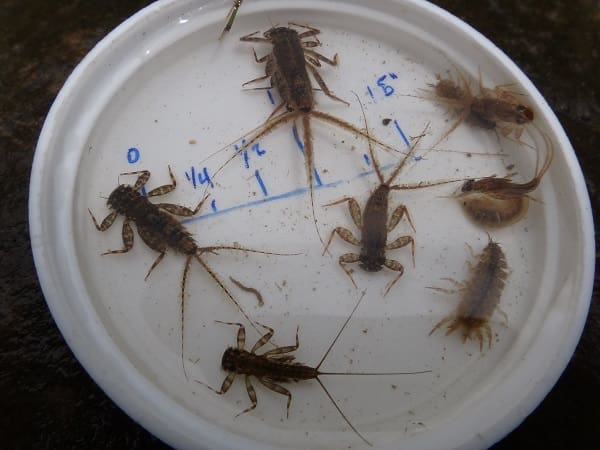
Some baits are high percentage baits and they consistently catch fish in all conditions, while other baits are low percentage baits that might only work sometimes.
The difference between a high percentage bait and a low percentage bait, would be how many trout will be willing to grab the bait at a given time. As an example, if a three-inch garden worm drifted through a pool with ten trout in it, 70% of the trout might be willing to grab it, whereas only 20% might be willing to grab Powerbait dough on a hook, and only 10% would be dumb enough to eat a piece of corn.
This means a guy fishing with worms might catch seven trout in that pool, and the guy with Powerbiat might catch two. The Powerbait still works, but why catch two when you can catch seven?
This is the reason you won’t see a good trout guide putting corn on his client’s hook.
Powerbait, corn, marshmallows, or other low-percentage baits should ONLY be used when you’ve already tried high-percentage baits and they’re not working.
I would rotate through ALL my high-percentage baits first before I put on a low-percentage bait.
These are the high percentage trout baits you should use 95% of the time:
- Garden worms: Do not ball them up or fold them on the hook. Do not use dew worms that you need to cut in half or break into pieces, unless that is your only option.
- Egg Sacks and Single Salmon Eggs: Spring and fall is a good time to use real eggs.
- Artificial flies: Trout love insects. Artificial flies account for a lot of large and small trout caught.
- Beads: Use only in faster currents.
- Crickets, grubs, maggots, mealworms: If rigged properly on the right sized hook these can be excellent
- Plastic trout worms: Very effective alternative in faster currents. Pink, red and brown are best.
- Minnows, leeches, crayfish: all good baits if they are the right size and rigged properly.
For more baits and how to rig them properly and fish them effectively, see my page Best Trout Bait – The Only 5 Baits You Will Ever Need
6. Use the Right Setup
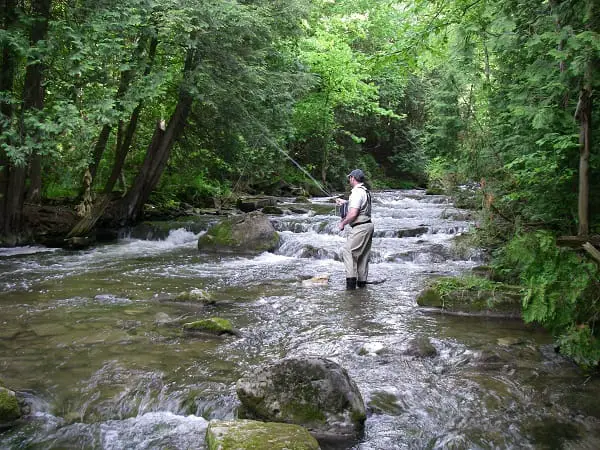
Improper hooking of a bait and bad leader setups are major reasons that anglers miss trout bites or get no bites at all, even when using an excellent bait.
You first need to decide which method you are going to use and then use the appropriate rig.
To set up any of these rigs use the correct materials, which include:
- Mainline: The line you use on the reel is important. For most trout situations, use a good quality 4-pound to 6-pound monofilament, or use a 12 to 20-pound braided line.
- Leader: For bait fishing, use 2 to 6-pound fluorocarbon, for lures, 8 to 10-pound.
- Split shots: Use only round ones that are dull black or grey. do not use silver, shiny weights!
- Hooks: Use high-quality wide-gap hooks.
- Floats / Bobbers: Use thin river floats even when fishing lakes. Clear floats are best in low clear water streams.
7. Which Methods Are Best?
The four main ways to fish for trout are fly fishing, bait fishing using a float, bait fishing using a bottom bouncing method, and fishing with lures. Some of these methods are more effective than others, and some are better in certain types of water.
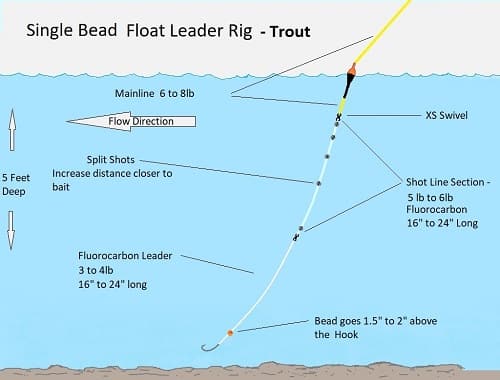
Float Fishing: Use a bobber (also called a float) when river fishing or when still water fishing in lakes and ponds to suspend your bait in the water column and in the strike zone.
This is an effective way to present your bait and detect bites.
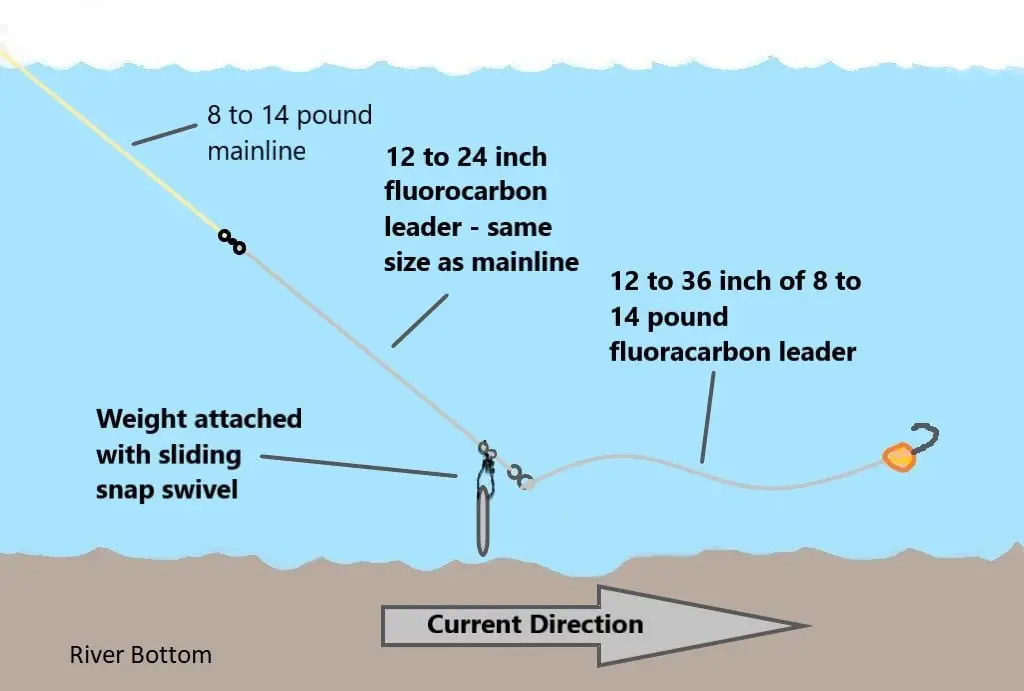
Bottom Fishing: Casting out a heavy weight and a bait is another good way to catch trout in a lake and sometimes in the river.
Just be sure you use the right rig and use a floating bait or something like a corky to suspend your bait up and off the bottom.
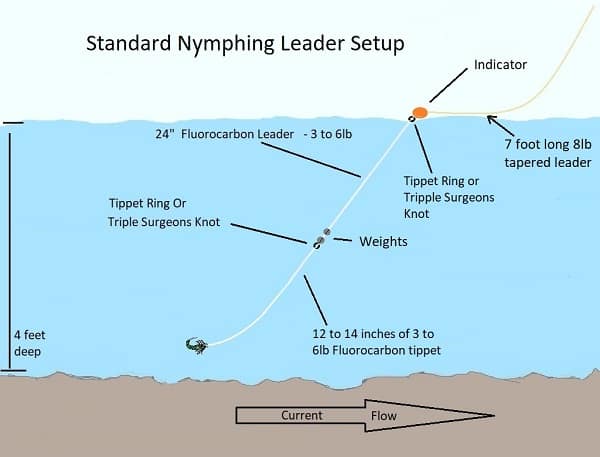
Fly Fishing: Fly fishing for trout is used by the majority of trout fishing guides, which says something about this method. Trout eat a lot of insects, and fly fishing is a great way to imitate the trout’s natural food source.
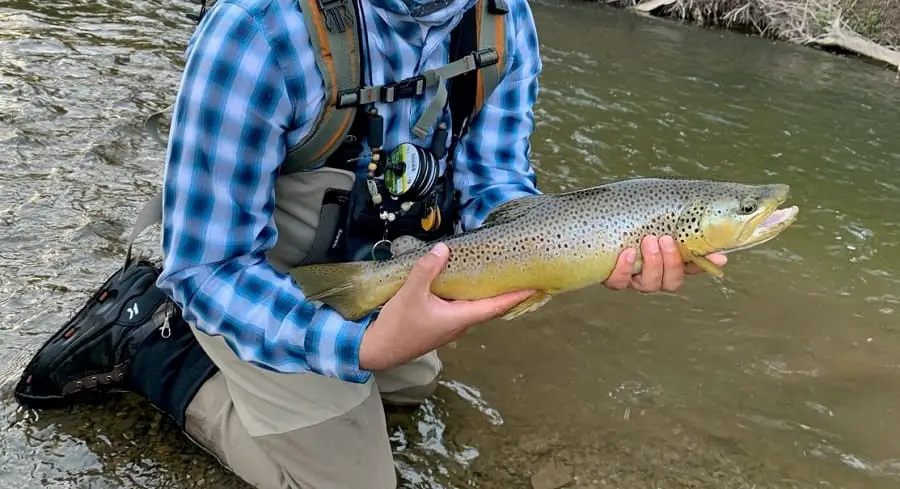
Lure Fishing: Lures are very effective at imitating bait fish and other food sources like leeches.
Casting lures is often the best way to cover a lot of water, especially on lakes and ponds.
8. Presentation is Key
Learning how to present your bait or lure will significantly improve your success. Just because you cast a perfectly rigged bait out into a river doesn’t mean you will catch trout with it.
In fact, I’ve watched plenty of anglers fish for hours and not catch any trout simply because they present their bait poorly.
Each fishing method has right ways and wrong ways to present your bait and lure. I highly recommend that you study your preferred presentation so you can do it well.
How to present your bait or lure properly is explained on these pages: Lure Fishing For Trout and Float Fishing For Trout.
9. Fish Productive Lakes And Rivers
As a new angler, do some research and fish only water known to have good populations of trout. First, get good fishing for trout on an easy river with smaller trout before tackling tougher rivers with big wild trout.
10. Read The Water
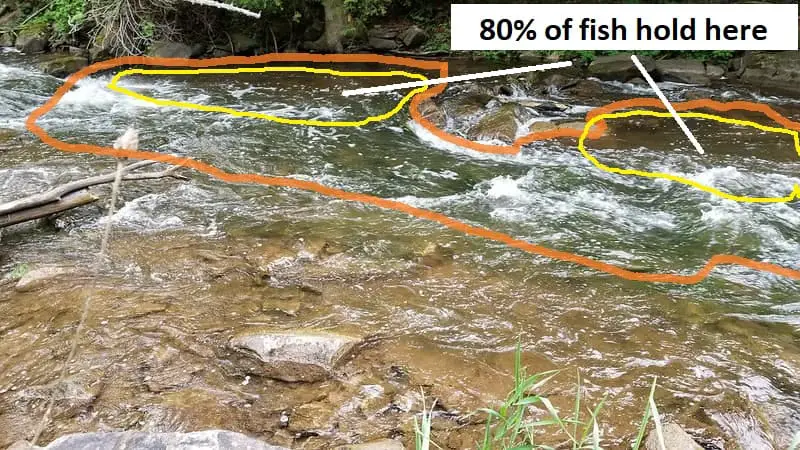
Reading the water means knowing where in the river or lake the trout are likely to be. Often, in most lakes and rivers, only 30 percent of the river holds trout, while the other 70 percent has no fish.
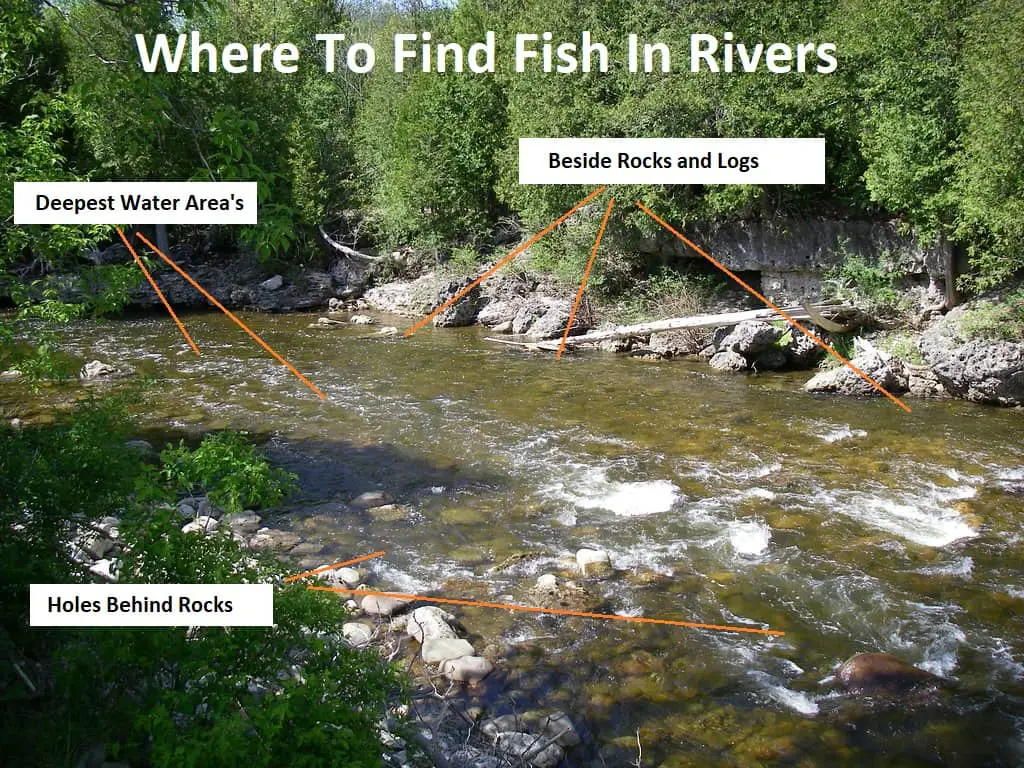
Structure and food are the keys to finding trout in the river or lake. In rivers, trout will seek out slightly deeper water with currents that provide oxygen and food.
In lakes, trout can cruise around looking for food, but their food is often found in and around structure, so sunken trees, and rock piles, and creel mouths are often the best spots.
11. Cover The Water Effectively
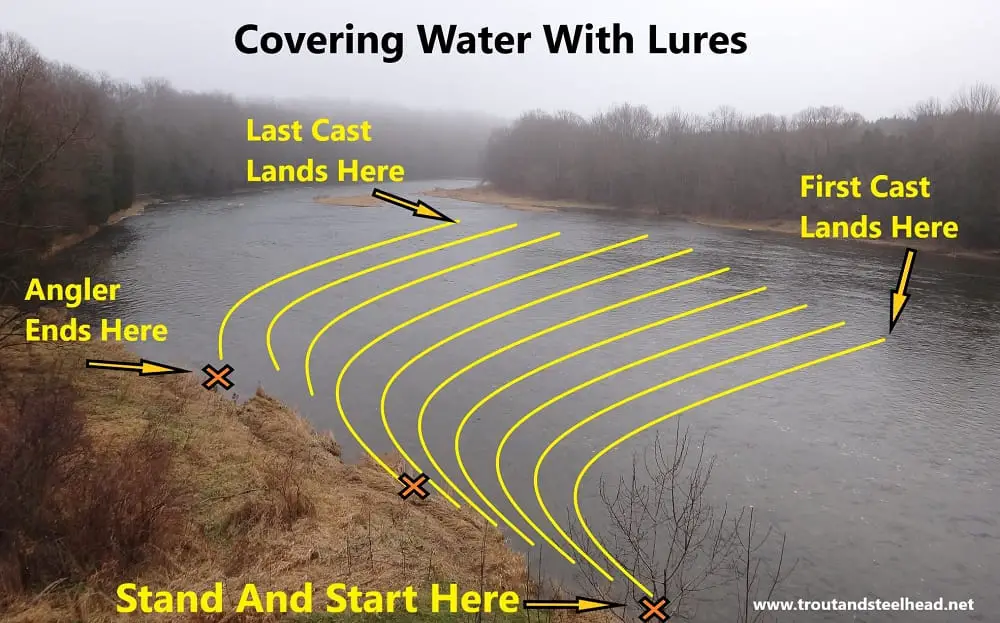
Whether you fish rivers or lakes, you should learn to cover all areas of the spot by moving your bait or lure around.
Casting a lure into the same spot is often a waste of time. If there was a fish there on the first cast and they want your lure, they will hit it or show themselves.
If not, it doesn’t matter how many times you cast to them, they won’t bit it, so move on, cover water and try to get your lure in front of as many trout as possible.
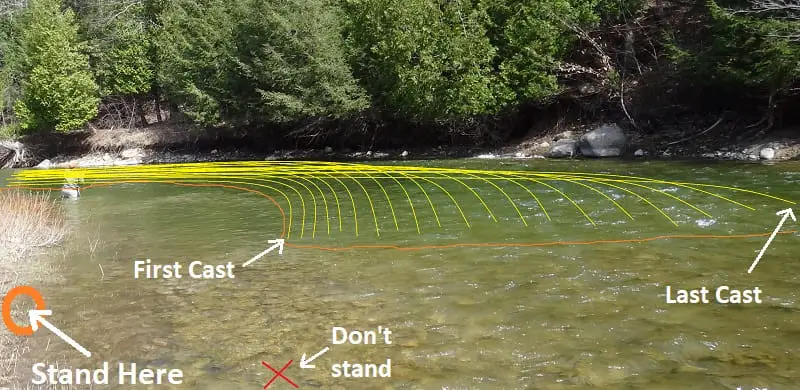
The same is often true of baits, especially bigger baits. The bigger the the less time I will fish it in the same spot. Instead, move your bait around to multiple spots quickly.
In rivers, this means I drift lines down the river and don’t fish the same line more than twice.
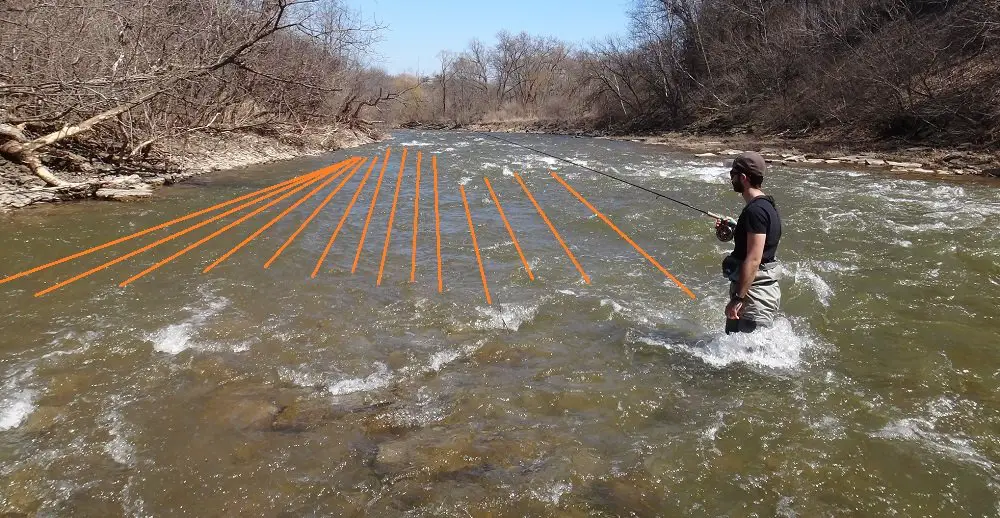
Doing this well puts my bait in front of more trout, which increases my chances.
Even when fishing very tiny flies, I rarely fish the fly through the same spot more than three times.
12. Fish Prime Times
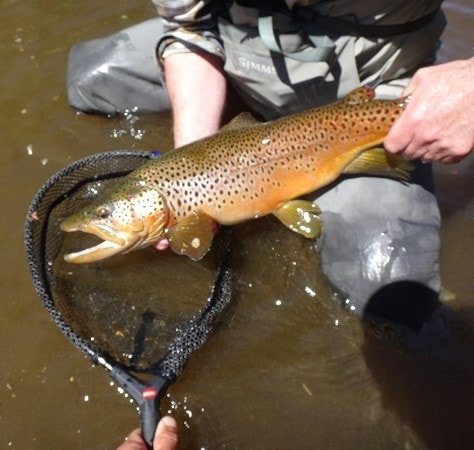
While many websites will tell you to fish in the morning and evenings, this is only half the truth.
There are times of the year when trout will feed later in the day because water temperatures or food sources are better. Trout will also feed when the insects hatch, which could be at anytime of the day.
However, many areas and rivers have what they call hatch chart,s which can give you a fairly accurate idea of the time of day for specific insect hatches.
As a general rule for beginners, morning and evening are good times to try fishing. But on cloudy days and in the winter, late morning and afternoon can be equally good or even better.
13. How Deep Do You Fish For Trout?
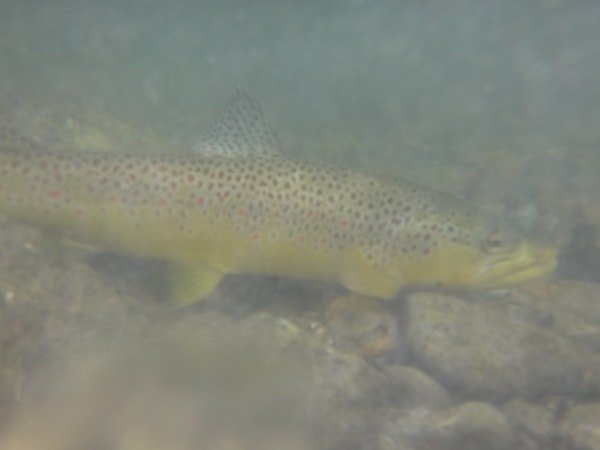
Most trout in rivers will hold and feed within one foot of the bottom, and they will feed sideways and upwards two or three feet or more depending on water clarity and the size of the food.
Trout in lakes also feed on or near the bottom, but they can also swim a few feet below the surface, which makes them more difficult to catch in lakes.
In my opinion, most new anglers do not get their bait deep enough, which means fewer fish in the net.
Some baits and some lures will get deeper faster, so learning which ones sink and which ones are more buoyant, and then how to fish them to get them deep and down to the trout is important.
What Are The Best Lures For Trout Fishing?
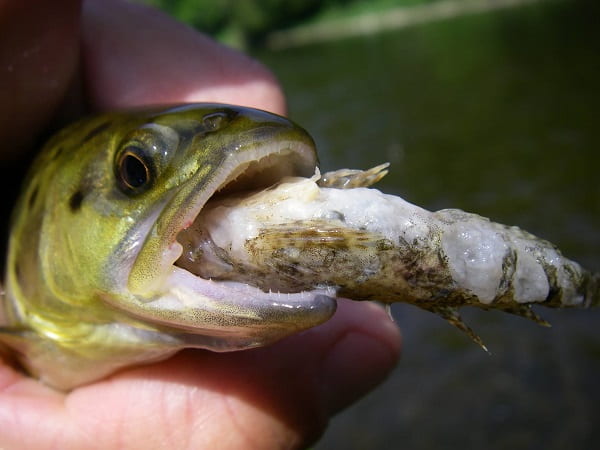
The best lures for trout are spinners, spoons, jigs, and crankbaits. Use silver, gold, black, and chartreuse, and experiment with other colors.
Use lures from one inch to four inches.
What Knots Should I Use For Trout Fishing?
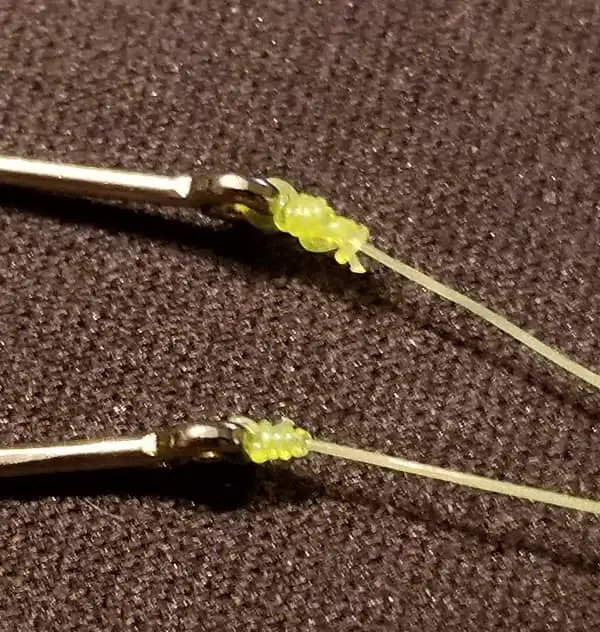
You want a knot that is easy to tie but strong enough to hold a big fish. Your knot is usually the weakest link unless your line is damaged.
You should use an improved clinch knot with a monofilament line, and if you are using a braided line, it’s best to use an improved Palomar Knot,
For tying two pieces of line together, I use a Triple Surgeons Knot with monofilament, or I will use a Double Uni Knot with a braided line.
Hire A Fishing Guide Or Find A Mentor
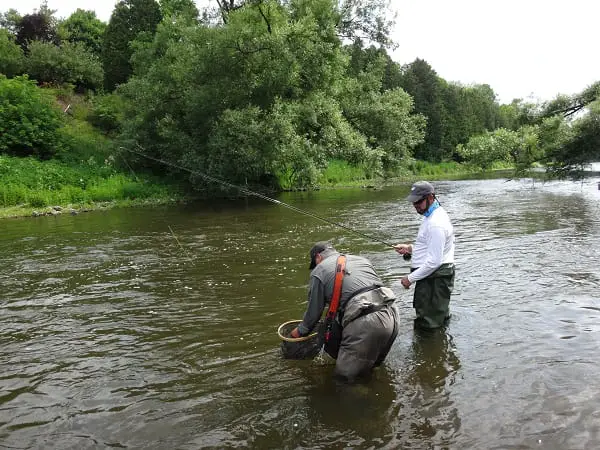
I have hired guides all over the USA and Canada because I know the value of a good guide.
Since my skill level is much higher than the average angler’s, I research my guides to find the best of the best for the area that I want to fish.
I hire the best of the best guides because these are the guys who can teach me something. These are the same guys you want to learn from.
With river fishing guides, reputation is everything, and you get what you pay for.
That wraps up this article, but for a lot more tips and advice, check out my bonus articles Trout Fishing Tips and Tricks and Catch More Trout When Fly Fishing.
Tight Lines
Graham,
